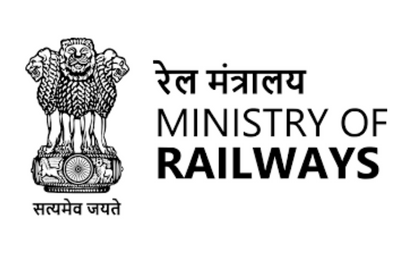Indian Railways Committed To Take New Steps For Increase Energy Efficiency
Indian Railways (IR) is committed to take new steps for energy conservation and thereby reducing its energy consumption and to increase energy efficiency. IR has also issued a comprehensive policy for adoption of energy efficiency

Indian Railways (IR) is committed to take new steps for energy conservation and thereby reducing its energy consumption and to increase energy efficiency. IR has also issued a comprehensive policy for adoption of energy efficiency measures in non-traction which, inter-alia, covers sustainable buildings, cloud based data monitoring and management portal and energy efficiency in equipment and appliances. The policy also provides for procurement of Bureau of Energy Efficiency (BEE) 5 star rated equipments. Some of the measures undertaken for energy conservation and reducing energy consumption are as follows:
- Railways has introduced Insulated-Gate Bipolar Transistor (IGBT) based 3-phase propulsion system with regenerative braking in Electrical Multiple Unit (EMU) trains, Mainline Electrical Multiple Unit (MEMU), Kolkata Metro rakes and Vande Bharat Trains to conserve energy during the operations.
- Production Units have completely switched over to production of energy efficient three-phase electric locos with regenerative braking features.
- Provision of energy efficient Light Emitting Diode (LED) lighting in Railway installations including Railway stations, service buildings, Residential quarters, coaches, EMUs/MEMUs for reduction in electricity consumption and better illumination.
- Use of energy efficient Brushless Direct Current (BLDC) motor fans in coaches and buildings.
- Conversion of End on Generation (EOG) trains into Head on Generation (HOG) system in trains to reduce diesel fuel consumption in power cars as well as noise and air pollution.
- Regular energy audits at consumption points.
- Regular counselling of Loco pilots for use of coasting, regenerative braking features and switching off blowers of electric locos in case yard detention is more than 15 minutes to save energy.
- Locomotive pilots are trained during their initial training as well as during promotional training and refresher courses for saving of energy/fuel to achieve better energy/fuel efficiency by good driving technique and better road learning.
- Guidelines have been issued for provision of energy saving mode on three phase locomotives wherein power supply to Oil Cooling Blower (OCB), Traction Motor Blower (TMB) and Scavenge Traction Motor Blower (ScTMB) will be switched off through software logic.
- Trailing locomotives of Multi Units (MU) hauling light loads are switched off to save energy.
- Provision of 750V external power supply at washing/sick lines for maintenance and testing of LHB coaches.
- IR has been made as designated consumer as part of Perform, Achieve and Trade (PAT) by Bureau of Energy Efficiency (BEE) for improving energy efficiency.
- Provision of Automatic Power Factor Controller panels in High Tension/Low Tension panels.
- Use of automatic platform lighting management system at stations as per train services/passenger requirements.
- Use of capacitor banks in traction sub-stations to maintain near unity power factor for energy saving.
- Use of timers on high mast tower lightings/street lighting/circulating area of Railway stations.
- Replacement of conventional geysers with solar geysers.
The energy conservations steps taken by Railways are monitored regularly at Railway Board as well as the Zonal Railways/Production Units. In this connection, regular inspection and monitoring of energy consumption of major load centers in Divisions and Workshops is also undertaken.
This information was given by the Minister of Railways, Communications and Electronic & Information Technology, Shri Ashwini Vaishnaw in a written reply to a question in Rajya Sabha today.
—-
 English
English French
French German
German Italian
Italian




